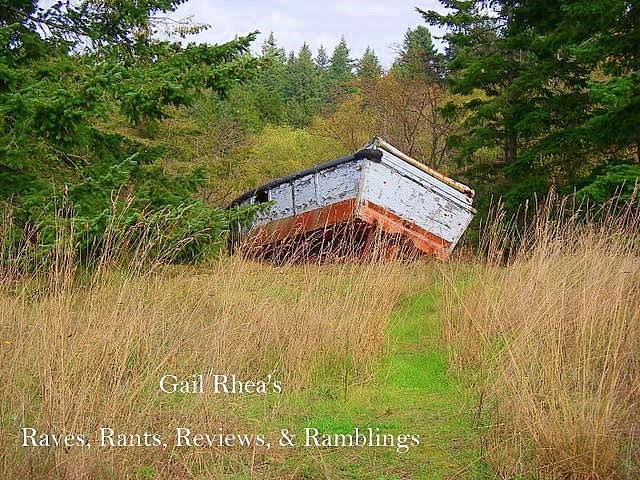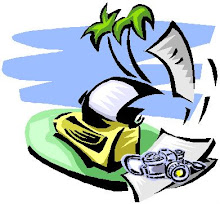Ever since I was a child, I've wanted to learn how to play a musical instrument. Back then, it was the organ. My parents enrolled me in a package of ten piano group lessons that I complained about because I was too young to appreciate having to wait around for 40 minutes of the hour-long lessons while the two other students received their 20 minutes apiece.
(Not that I'd appreciate waiting around for 40 minutes now, either.)
It was too boring for words and the little electric piano the teacher had us using sounded terrible. There was absolutely no joy in the experience that I had eagerly anticipated and my parents never tried it again.
In my teens, I got myself an acoustic guitar, some instructional material, and tried to teach myself to play. I thought I was doing fairly well and enjoyed the sounds I was making but quit because I didn't know it was normal for fingers to hurt like crazy until calluses built up on tender skin.
I'll spare you other painful details with more instruments in the intervening years because those two examples should suffice for you to get the big picture.
During my road trip in 2007, I bought an instructional book by David Harp that came with a CD and harmonica from the REI store near San Diego. It was different because it didn't have songs like other music books but taught riffs for blues and rock songs. They were very easy to learn and I was imitating a train with whistle the first night. Maybe it wasn't music in the sense of playing a melody, but it sounded good to me and, most of all, it was fun!
Until I misplaced the book and CD.
Last year, I bought a book and recorder from the Wal-Mart children's toy section for about US$10. Being adult about it, I refrained from buying one of the translucent bright red or blue or purple recorders and settled on a solid, sedate, ivory; not that I wasn't tempted to get one that was more colorful.
Several times last month, I watched "Australia" on HBO thinking more and more, "I can do that" whenever the boy played "Over The Rainbow" on his harmonica. So, I got my harmonica and copied the tabs for the song off the Internet.
Except the song doesn't sound right.
Getting another copy that doesn't sound right either, but in different places, I spent over three and a half hours one Thursday night with them and my harmonica making a third set of tabs that sound right to me.
My lips still hurt on Saturday.
This time, I know not to give up entirely as I did with the guitar, but what do I do in the meantime? I still want to make music and even my sporadic, paltry attempts are deeply satisfying.
Another thought that crossed my mind was, "What if I get another episode of Bell's Palsy?" although I've been at least 95% free of it since Christmas. With a minor sense of not being 100% okay, I decided that I need something else that's travel-sized to alternate with the harmonica. That way, should I lose control of one side of my mouth again, I could stick the mouthpiece into the other side and still be able to play.
I went back to the recorder and played through the lessons to see why I quit. Ah, yes, I remember. Lesson 7 introduces a note that requires me to uncover the thumb hole. That was the show-stopper.
You see, my thumb has a mind of its own.
When I tell it to cover the hole, by golly it's going to keep that hole covered no matter what. As a result, when I tell it to uncover the hole, it yields only with intense reluctance after much earnest protesting. When I tell it to cover the hole again, it yells at me to make up my [blinking] mind. There's no point to switching hands because both thumbs are in cahoots.
I hate being chewed out by my own body.
After a week of fighting over that single note, I'm thinking there's got to be something better for me.
My remaining options appear to be an ocarina or a tin whistle, also called a penny whistle although many are no longer made of tin and none cost only a penny anymore.
The ocarina is an old South American wind instrument that was made popular by Giuseppe Donati, an Italian brickmaker circa 1850. Issued to soldiers during World War I and II, ocarinas are having a revival because of "The Legend of Zelda" game series by Nintendo. Ocarinas are available in different styles, materials, colors, and prices starting at US$5 with the number of holes ranging from four to twelve.
The ocarinas with four finger holes that don't have thumb holes sound like they'd be the best for me. Those that have six or more holes may instigate more arguments with my thumbs.
Researching tin whistles is encouraging because they are reputed to be the easiest instrument to learn, don't have thumb holes (Hallelujah!), sound better than recorders, and are available in a wide range of prices. Since even professional musicians use whistles that cost US$25 or less, there's no snob appeal in having an expensive whistle. The thing that matters is whether or not you enjoy the way your whistle sounds.
The sole negative is that since the increased popularity of Celtic music that started back in the 1970s and because the majority of Celtic music is in the key of D, it's hard to find instructional material in the key of C even when it isn't Celtic music.
The good part about the soprano or high D whistles that beginners typically use is that they're easier to play than those in the key of C because they require less air. Because the holes are closer together, it's less of a stretch which may be a determining factor for the small hands of children.
Another good thing is that tin whistles all use the same fingering to produce the notes. Once learned, what one has to do to play in a different key is merely get a whistle in that key and get used to the whistle's different length and spacing of the holes which isn't that easy when it's something like a low D.
Learning on a whistle in a key other than D results in the student not sounding right only when playing along with an instructional CD or with other people unless they're also using instruments in the same or a complementary key.
Hannah Kate Kinnersley wrote in her Wall Street Journal article, "Music Lessons: Learning To Play The Tin Whistle," that learning to play a musical instrument is good for children because "Studies say that children who play an instrument score higher on math tests and show improved concentration. Adults who play score better in memory tests."
The advantages of getting an inexpensive, travel-sized, musical instrument is that you'll have something to entertain yourself and others during overly long waits, car and bus rides, hiking rest stops, or evenings by the camp fire; you'll be able to cheer and comfort yourself when you're lonely, and it won't cost much to replace if lost.
In addition to these advantages, it's ideal for your preparedness Grab & Go bag because it doesn't require batteries.
Even if you don't count relaxation or the sense of accomplishment that comes from making your own music, it's all upside. There is no downside to learning how to play a musical instrument.
All you have to do is select an appropriate instrument and find the method of learning that works best for you.


